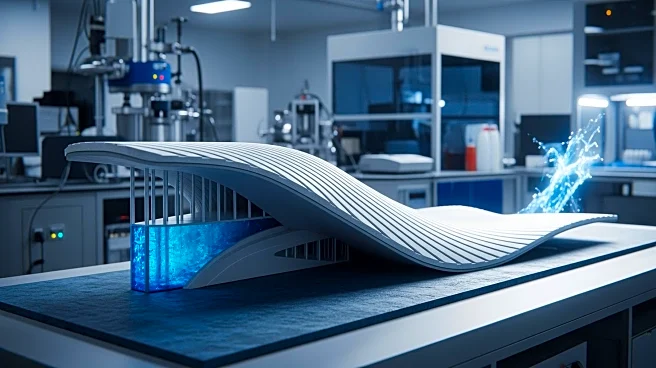What's Happening?
Researchers at Northwestern University have developed a carbon-negative construction material derived from seawater, which could significantly alter the carbon profile of cement and concrete production.
The material captures and sequesters CO2 during its formation, offering a net CO2 removal pathway embedded within building materials. This innovation presents a potential substitute or complementary binder for concrete applications, aiming to lower lifecycle emissions of buildings and infrastructure.
Why It's Important?
The construction industry is a major contributor to global CO2 emissions, primarily due to the production of traditional Portland cement. The seawater-derived binder offers a sustainable alternative that could reduce emissions and promote environmental accountability in construction practices. If adopted at scale, this material could play a crucial role in mitigating climate change impacts and advancing the industry's transition towards sustainable building solutions.
What's Next?
Further research and development are needed to establish manufacturing scale, assess long-term durability, and evaluate the energy and resource intensity of the extraction and conversion process. Regulatory acceptance and cost-competitiveness will also be key factors in determining the material's practical adoption. The research team is likely to engage with industry stakeholders to explore commercial applications and integration into existing construction practices.













